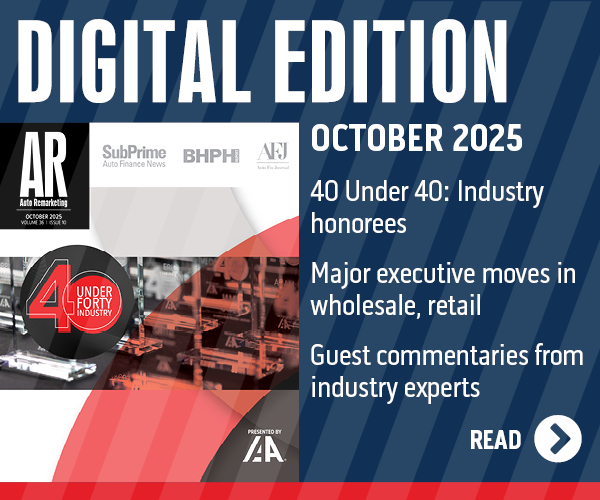Pollak on NADA: Four Ways Convergence Will Affect Dealers

By subscribing, you agree to receive communications from Auto Remarketing and our partners in accordance with our Privacy Policy. We may share your information with select partners and sponsors who may contact you about their products and services. You may unsubscribe at any time.
LAS VEGAS –
I’d like to thank all of the dealers and their teams who visited vAuto’s booth to learn more about our Provision inventory management system and other products and services. The positive responses about Provision confirm it’s a game-changer for the industry.
While chatting with dealers and managers at NADA, I was struck by how often the dialogue turned to convergence.
The topic came up in virtually every corner of conversation — from the convergence of vendors (e.g., the vAuto integration with AutoTrader.com and Manheim), the convergence of technology (e.g., the merger of desktop and mobile), the convergence of customer shopping behavior online (e.g., the blend of search and social media with Google+), the convergence of technology and process (e.g., process metrics and accountability) and the convergence of ownership (e.g., the outlook for increased buy/sell activity).
As I think about what convergence means for dealers, there are four takeaways that come to mind, blending both the practical and profound:
1. Efficiency will bring advantage.
This applies to all dealership departments. In used vehicles, those who can identify, source and retail the “right” vehicles for their markets in the most time- and cost-efficient manner will beat those who haven’t yet embraced the efficiencies that the convergence of technologies will provide.
Subscribe to Auto Remarketing to stay informed and stay ahead.
By subscribing, you agree to receive communications from Auto Remarketing and our partners in accordance with our Privacy Policy. We may share your information with select partners and sponsors who may contact you about their products and services. You may unsubscribe at any time.
Some suggest the convergence of ownership gives larger stores a potential advantage, given they can use multiple locations to spread out risks and maximize opportunities. I see the point, but submit that smaller stores can leverage their own advantage — the ability to move quickly and decisively — and compete effectively.
2. Strategy-setting is critical.
More and more, dealers recognize the Internet is today’s primary playing field for attracting and capturing customers. Yet, the dynamics of online shoppers keep changing.
At NADA this year, many dealers were discussing the convergence of social media, local search and mobile-based queries (what Google dubs “SoLoMo”) and what it means for their online strategy.
Industry stats say consumers visit more than 18 sites as they research and shop for vehicles — often moving from classified and third-party sites, where they hone vehicle choices, to more local resources where they look for specific vehicle availability and dealers.
The underlying takeaway for dealers: They need to craft/hone a strategy that ensures capacity, expertise and flexibility to engage customers in a more meaningful way at all potential online touch-points. Interestingly, as much as the online space evolves, the age-old axiom to “go where your customers are” still applies.
3. Management metrics matter more and more.
I had a couple wistful conversations with dealers. The gist: The business today seems a lot harder than it used to be. After mulling this, I came to the conclusion that it’s not necessarily more difficult, but it certainly requires a more discipline- and accountability-focused approach to management than many dealers are accustomed to deploying at their dealerships.
On the plus side, technology is helping make managers more efficient by providing metrics on performance for every dealership department and task — even when this requires interfaces between disparate systems.
The key for dealers is to actually use these metrics to guide decision-making and manage employee expectations and performance.
4. E-commerce is coming on strong.
A United Kingdom magazine editor asked me what I thought would be the most profound challenge facing dealers in the next 10 years.
My answer: The convergence of compressed dealership operating margins, Gen Y buyer preferences and advances in technology that will move more aspects of the car-buying process online.
I suggested this trifecta will have a significant impact on the number and type of people working in dealerships and the size and function of dealership facilities themselves.
I thought about my response on the way home from NADA and realized that the pace of this convergence may be moving faster than any of us (want to) acknowledge.
To read this and more of Pollak’s columns, visit http://www.dalepollak.com.


